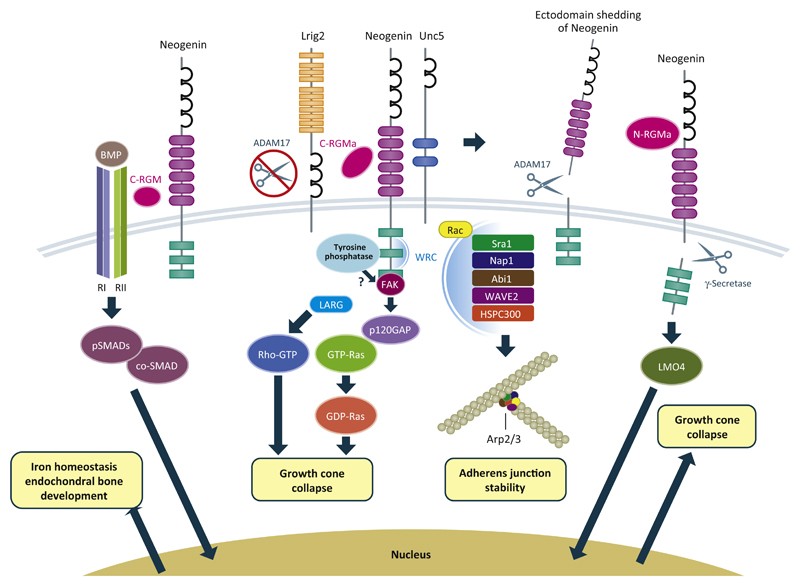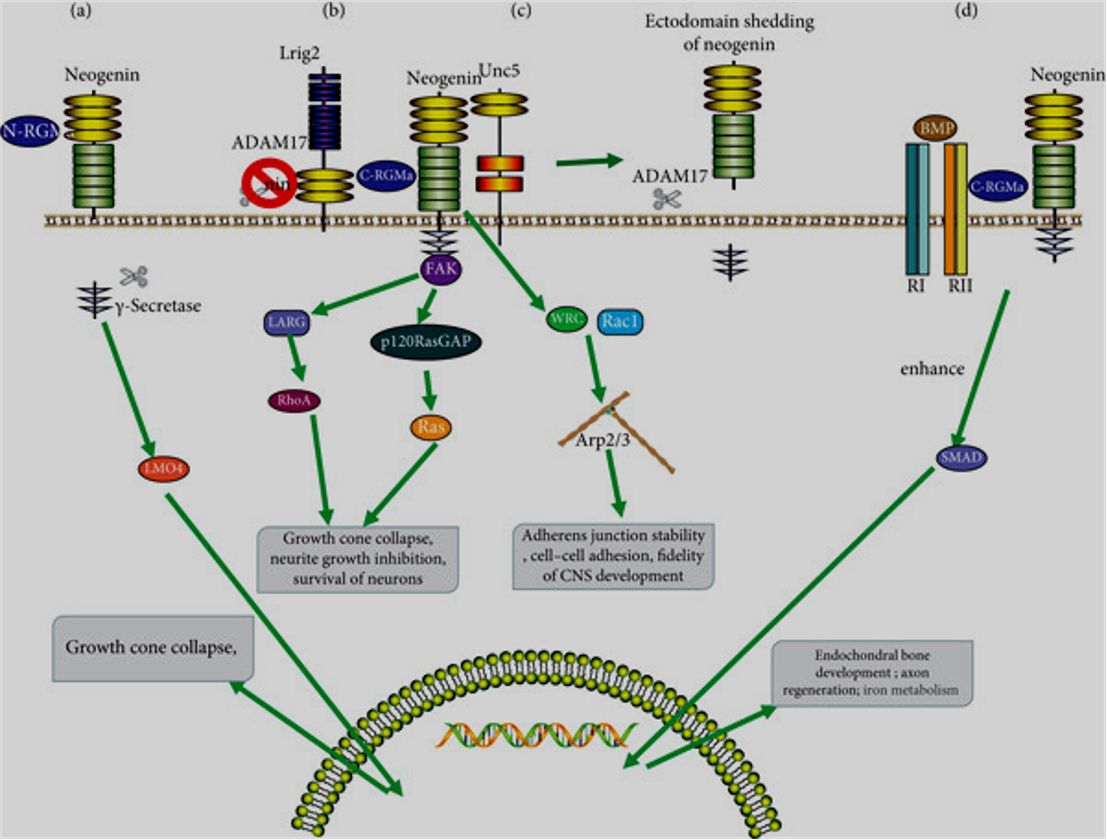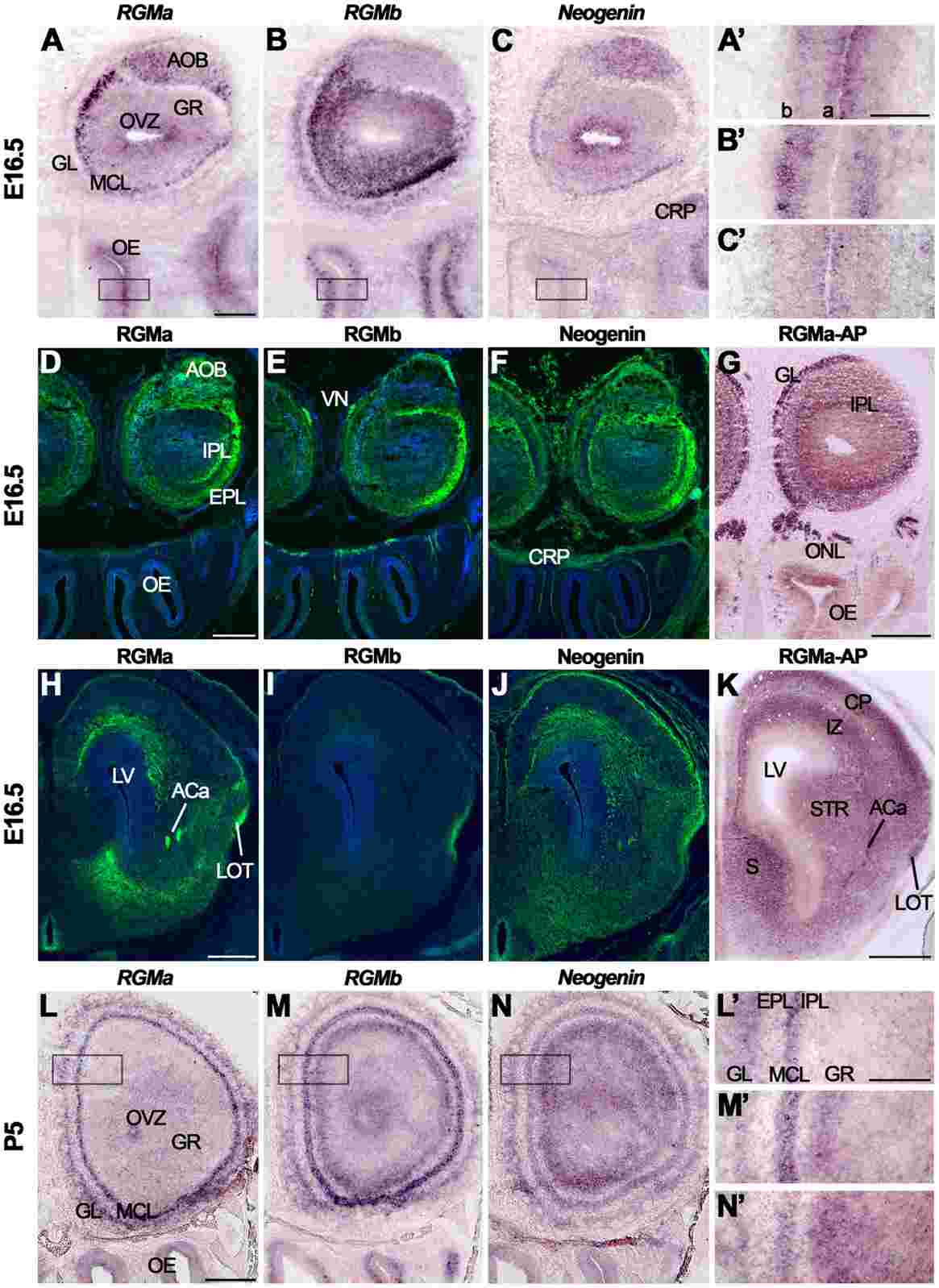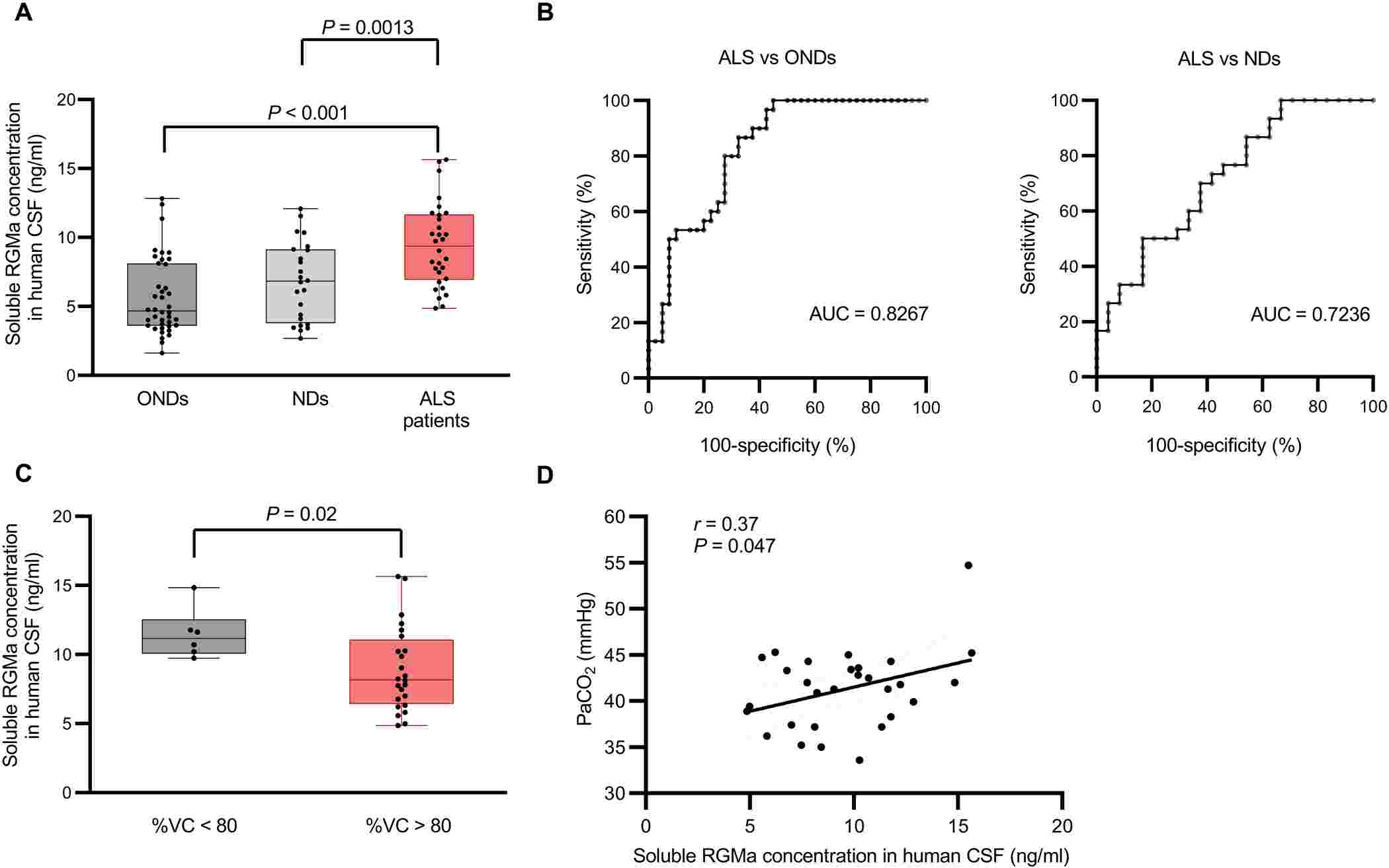Repulsive Guidance Molecules and Receptors
Related Symbol Search List
Immunology Background
Background
Repulsive Guidance Molecules (RGMs) and their receptors are key players in the intricate process of axon guidance and neuronal development in the nervous system. These molecules, also known as RGMs, exert their effects through interactions with specific receptors on growth cones of extending axons, steering them away from inappropriate regions and guiding them toward their appropriate targets.
Repulsive Guidance Molecules (RGMs)
RGMs are a family of glycosylphosphatidylinositol-anchored proteins that include RGMa, RGMb (DRAGON), and RGMc (hemojuvelin). These molecules are known for their repulsive effects on axonal growth cones, influencing the pathfinding of developing neurons during embryonic and postnatal development.
- RGMs are involved in various developmental processes, including neural guidance, organ development, and iron homeostasis.
- They can act as guidance cues for neuronal growth cones and have roles beyond the nervous system.
Receptors for Repulsive Guidance Molecules
The main receptors for RGMs include Neogenin, a member of the immunoglobulin superfamily, and the Bone Morphogenetic Protein (BMP) coreceptors, including BMP receptors and HJV (hemojuvelin), which interact with RGMc. These receptors mediate the repulsive guidance effects of RGMs on growing axons, regulating their direction and connectivity within the developing nervous system.
Key Receptors
Neogenin: This receptor is primarily associated with neuronal guidance, promoting axon growth and fasciculation. Neogenin interacts with RGMs to mediate repulsive signaling, crucial for proper neural pathway formation.
HJV (Hemojuvelin): This receptor is involved in iron metabolism and is a key player in the regulation of hepcidin, a hormone that controls iron homeostasis. HJV can also interact with RGMs to facilitate signaling pathways related to organ development.
Functions and Roles
- Axon Guidance: RGMs and their receptors play a crucial role in directing axonal growth cones during neural development. By inducing repulsive signaling, they guide axons away from inhibitory regions and towards appropriate targets, ensuring precise neural circuit formation.
- Synaptic Connectivity: Through their repulsive effects, RGMs contribute to the establishment of proper synaptic connectivity in the developing nervous system. They help ensure the accurate wiring of neuronal circuits by steering axons to their correct synaptic partners.
- Neuronal Plasticity: RGMs and their receptors also influence neuronal plasticity by regulating axonal growth and guidance in response to environmental cues. They contribute to the dynamic remodeling of neural circuits and synaptic connections in the developing and adult brain.
- Pathological Implications: Dysregulation of RGM signaling has been implicated in various neurological disorders, including neurodegenerative diseases, spinal cord injuries, and developmental disorders. Understanding the roles of RGMs and their receptors in these conditions may offer insights into potential therapeutic targets for intervention.
In conclusion, Repulsive Guidance Molecules and their receptors play essential roles in axon guidance, synaptic connectivity, and neuronal plasticity during neural development. Their intricate interactions regulate the precise wiring of neural circuits, influencing brain function and connectivity. Studying the functions and mechanisms of RGMs and their receptors provides valuable insights into the complex processes underlying neural development and pathophysiology in various neurological conditions.
 Fig.1 RGMs act as co-receptors for bone morphogenetic proteins (BMPs) and have been proposed to act as a structural bridge between BMPs and Neogenin. (Siebold C, et al., 2017)
Fig.1 RGMs act as co-receptors for bone morphogenetic proteins (BMPs) and have been proposed to act as a structural bridge between BMPs and Neogenin. (Siebold C, et al., 2017)Repulsive Guidance Molecules and Receptors
The following is an introduction to some repulsive guidance molecules and receptors:
| Type | Details |
|---|---|
| Repulsive Guidance Molecules (RGMs) |
RGMA (Repulsive Guidance Molecule A)
RGMB (Repulsive Guidance Molecule B)
|
| Receptors |
DCC(Deleted in Colorectal Cancer)
NTN1(Netrin-1)
UNC5A, UNC5B, UNC5C, UNC5D (Uncoordinated-5 Receptors A-D)
|
| Other Associated Proteins |
ROCK2(Rho-Associated Coiled-Coil Kinase 2)
ARHGEF12 (Rho Guanine Nucleotide Exchange Factor 12)
DAPK3(Death-Associated Protein Kinase 3)
NR0B2(Nuclear Receptor Subfamily 0 Group B Member 2)
PTK2(Protein Tyrosine Kinase 2)
PTPN11(Protein Tyrosine Phosphatase, Non-Receptor Type 11)
SIRPA(Signal Regulatory Protein Alpha)
Src(Proto-Oncogene Tyrosine-Protein Kinase Src)
|
 Fig.2 Mechanisms for RGMa Signal Transduction. (Tang J, et al., 2021)
Fig.2 Mechanisms for RGMa Signal Transduction. (Tang J, et al., 2021)Interaction and Importance of RGMs and Their Receptors
The interactions between RGMs and their receptors, such as Neogenin and Hepcidin or HJV (Hemojuvelin), play crucial roles in neural development and organogenesis. Here's a detailed look at these interactions and their significance:
Interactions Between RGMs and Their Receptors
- Receptor Binding
RGMs primarily interact with neogenin, a receptor involved in guiding neuronal growth and regulating cell adhesion.
The binding of RGMs to neogenin can initiate different intracellular signaling cascades that influence cellular behavior.
- Signaling Pathways
Upon RGM binding, neogenin activates pathways such as Rho GTPases, which are involved in cell migration and cytoskeletal rearrangements.
These interactions can also modulate the activity of other receptors and intracellular signaling molecules, leading to adjustments in gene expression and cellular responses.
- Complex Formations
RGMs can form complexes with other proteins, including those involved in the bone morphogenetic protein (BMP) signaling pathway, thereby integrating multiple signals that influence cell fate decisions.
Functional Roles of Interactions Between RGMs and Their Receptors
- Neural Development
Axon Guidance: RGMs bind to Neogenin, activating signaling cascades that guide axons towards their targets. These interactions are essential for forming correct neural connections and avoiding inappropriate pathways.
Cell-Cell Interactions: RGMs can influence the behavior of neighboring cells during neurogenesis, affecting proliferation and differentiation.
- Organogenesis
Iron Metabolism: In the context of organ development, HJV's interaction with RGMs is significant for regulating iron levels, which are critical for cellular functions and growth during embryonic development.
Tissue Differentiation: The signaling pathways activated by RGM and HJV interaction influence the differentiation of various organ systems, particularly in the liver and heart.
Importance of These Interactions Between RGMs and Their Receptors
- Correcting Pathfinding Errors
Deficiencies or aberrations in RGM-Neogenin interactions can lead to misrouting of neural circuits, resulting in developmental disorders or cognitive impairments.
- Maintaining Iron Homeostasis
The interplay between RGMs and HJV is vital to ensure adequate iron supply for developing organs, preventing conditions like anemia or tissue damage.
- Multiple Pathways
RGMs may also engage other receptors and signaling pathways, amplifying their influence on neural and organ development. Understanding these networks can reveal potential therapeutic targets for developmental disorders and metabolic diseases.
| Importance in Neural Development | Importance in Organogenesis |
|---|---|
This is critical for the proper wiring of the nervous system, influencing the formation of neural circuits. |
RGMs are involved in the shaping and organization of tissues during organ formation. They can influence cell migration and proliferation, essential for proper organ structure and function. For instance, they play roles in the development of the heart and other organs by guiding the precise positioning of cells. |
By influencing the activity of signaling pathways, RGMs contribute to the differentiation of neural progenitor cells into specific neuronal subtypes, thus shaping the overall architecture of the nervous system. |
RGMs are important in angiogenesis, where they contribute to the formation of blood vessels by guiding endothelial cell migration and organization. |
RGMs have been implicated in regulating synaptic development, including dendritic growth and synapse maturation, which are essential for functional neural networks. |
RGMs can act to limit excessive cell proliferation, ensuring balanced growth and preventing conditions such as tumors during organ development. |
The interactions between RGMs and their receptors are fundamental to many processes in both neural development and organogenesis. By guiding cell movements, influencing differentiation, and coordinating tissue morphogenesis, RGMs ensure that organs and neural structures develop correctly, which is critical for overall organismal health and function. Understanding these interactions further could provide insights into developmental disorders and potential therapeutic targets for regenerative medicine.
Role of RGMs and Receptors in Disease
RGMs and their receptors play diverse roles in disease pathogenesis across various organ systems. Here are some specific examples of how RGMs and their receptors are implicated in different diseases:
Neurological Disorders
- Alzheimer's Disease: RGMa has been associated with promoting amyloid-beta-induced neuronal death in Alzheimer's disease by activating the Neogenin receptor. This interaction exacerbates neurodegeneration in the brain.
- Multiple Sclerosis (MS): RGMa has been found to be upregulated in active lesions of multiple sclerosis patients. It may contribute to the inhibition of axonal regeneration and remyelination, thus playing a role in the progression of MS.
Cancer
- Breast Cancer: RGMa has been implicated in promoting breast cancer cell proliferation, migration, and invasion. It can activate signaling pathways that contribute to tumor growth and metastasis.
- Colorectal Cancer: RGMa has been shown to be overexpressed in colorectal cancer tissues. Its interaction with Neogenin can promote cancer cell proliferation and invasion, suggesting a role in the progression of colorectal cancer.
Cardiovascular Diseases
- Atherosclerosis: RGMa has been linked to atherosclerosis, a condition characterized by the buildup of plaque in the arteries. It can induce endothelial dysfunction and promote inflammatory responses that contribute to atherosclerotic plaque formation.
- Cardiac Hypertrophy: RGMb has been implicated in cardiac hypertrophy, a condition characterized by the thickening of the heart muscle. RGMb expression is increased in hypertrophic hearts, and its interaction with Neogenin can activate signaling pathways involved in cardiac remodeling.
Iron Metabolism Disorders
- Hereditary Hemochromatosis: Mutations in the Hemojuvelin (HJV) gene, an RGM family member, can lead to hereditary hemochromatosis, a disorder characterized by excessive iron absorption and iron overload in tissues. Disruption of RGM-HJV interactions can result in dysregulated iron metabolism.
- Iron-Deficiency Anemia: RGMs are involved in iron metabolism and can influence the expression of iron-regulatory genes. Dysregulation of RGM signaling pathways may contribute to the development of iron-deficiency anemia.
Inflammatory Disorders
- Rheumatoid Arthritis: RGMa has been implicated in promoting inflammation and joint destruction in rheumatoid arthritis. It can induce the production of pro-inflammatory cytokines and matrix metalloproteinases in synovial cells, contributing to disease progression.
- Inflammatory Bowel Disease (IBD): RGMa has been associated with intestinal inflammation in inflammatory bowel disease. Its interaction with Neogenin can modulate immune responses and contribute to the pathogenesis of IBD.
Understanding the roles of RGMs and their receptors in various diseases provides insights into the underlying mechanisms of these conditions and highlights potential therapeutic targets for intervention. Targeting RGM signaling pathways could offer new avenues for the development of treatments aimed at mitigating the effects of these diseases.
Case Study
Case 1: van den Heuvel DM, Hellemons AJ, Pasterkamp RJ. Spatiotemporal expression of repulsive guidance molecules (RGMs) and their receptor neogenin in the mouse brain. PLoS One. 2013;8(2):e55828.
Neogenin's involvement spans various developmental processes like neurogenesis, neuronal differentiation, apoptosis, migration, and axon guidance. When Repulsive Guidance Molecules (RGMs) bind to Neogenin, they impede axon outgrowth in diverse neuronal populations. This interaction mandates Neogenin's engagement with co-receptors from the Unc5 family to trigger downstream Rho signaling pathways. While past research has touched upon RGM, Neogenin, and/or Unc5 expression individually, a comprehensive comparative analysis of RGM and Neogenin expression in developing nervous systems, particularly in later developmental phases, is lacking. Additionally, details on RGM and Neogenin protein expression remain scarce.
To address these gaps and enhance our understanding of RGM-Neogenin signaling in mouse neural development, research delved into the expression profiles of RGMa, RGMb, Neogenin, and Unc5A-D using techniques like in situ hybridization, immunohistochemistry, and RGMa section binding. Specific attention was paid to expression patterns in key regions such as the primary olfactory system, cortex, hippocampus, habenula, and cerebellum. Notably, distinct cell layer-specific expression profiles emerged for RGMa, RGMb, Neogenin, and Unc5A-D. Moreover, robust expression of RGMa, RGMb, and Neogenin proteins was observed along significant axon tracts like the primary olfactory projections, anterior commissure, and fasciculus retroflexus.
These findings not only suggest the involvement of RGM-Neogenin signaling in the development of various neuronal systems but also indicate that Neogenin collaborates with different members of the Unc5 family across different systems. In essence, the outcomes of this study establish a foundational understanding that can guide further exploration into the role of RGM-Neogenin signaling during neural development.
 Fig.1 RGM and Neogenin expression in the mouse olfactory system.
Fig.1 RGM and Neogenin expression in the mouse olfactory system.Case 2: Shimizu M, Shiraishi N, Tada S, et al. RGMa collapses the neuronal actin barrier against disease-implicated protein and exacerbates ALS. Sci Adv. 2023;9(47):eadg3193.
Repulsive guidance molecule A (RGMa) was initially recognized as a factor inducing collapse in neuronal growth cones. Prior studies have delineated the diverse functions of RGMa modulated by neogenin1. However, the precise role of RGMa in amyotrophic lateral sclerosis (ALS) pathology has remained ambiguous. In this study, it was demonstrated that RGMa levels were elevated in the cerebrospinal fluid of ALS patients and transgenic mice carrying the mutant human superoxide dismutase1 (mSOD1 mice). Treatment with a humanized anti-RGMa monoclonal antibody alleviated clinical symptoms in mSOD1 mice.
Histological examinations unveiled that the anti-RGMa antibody notably reduced the accumulation of mutant SOD1 protein in the motor neurons of mSOD1 mice by impeding actin depolymerization. In vitro assessments indicated that the anti-RGMa antibody hindered the internalization of mutant SOD1 protein by reinforcing the neuronal actin barrier. Cumulatively, these findings suggest that RGMa disrupts the neuronal actin barrier, fostering abnormal protein deposition, thus exacerbating ALS pathology.
 Fig.2 RGMa was significantly elevated in the CSF of patients with ALS.
Fig.2 RGMa was significantly elevated in the CSF of patients with ALS.Related References
- Tang J, Zeng X, Li H, Ju L, Feng J, Yang J. Repulsive guidance molecule-a and central nervous system diseases. Biomed Res Int. 2021;2021:5532116.
- Siebold C, Yamashita T, Monnier PP, Mueller BK, Pasterkamp RJ. RGMs: Structural insights, molecular regulation, and downstream signaling. Trends Cell Biol. 2017;27(5):365-378.

